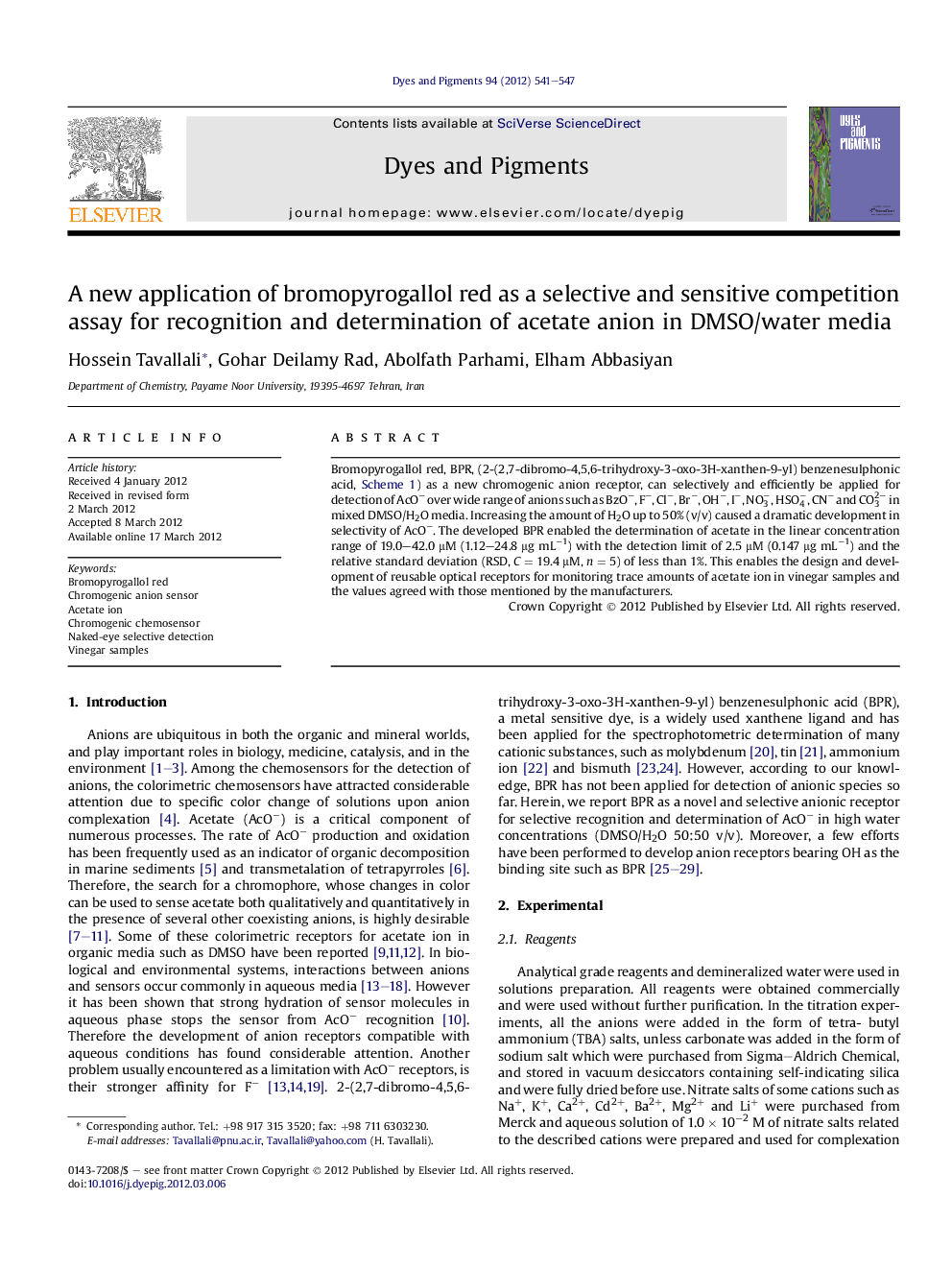| Article ID | Journal | Published Year | Pages | File Type |
|---|---|---|---|---|
| 176648 | Dyes and Pigments | 2012 | 7 Pages |
Bromopyrogallol red, BPR, (2-(2,7-dibromo-4,5,6-trihydroxy-3-oxo-3H-xanthen-9-yl) benzenesulphonic acid, Scheme 1) as a new chromogenic anion receptor, can selectively and efficiently be applied for detection of AcO− over wide range of anions such as BzO−, F−, Cl−, Br−, OH−, I−, NO3−, HSO4−, CN− and CO32− in mixed DMSO/H2O media. Increasing the amount of H2O up to 50% (v/v) caused a dramatic development in selectivity of AcO−. The developed BPR enabled the determination of acetate in the linear concentration range of 19.0–42.0 μM (1.12–24.8 μg mL−1) with the detection limit of 2.5 μM (0.147 μg mL−1) and the relative standard deviation (RSD, C = 19.4 μM, n = 5) of less than 1%. This enables the design and development of reusable optical receptors for monitoring trace amounts of acetate ion in vinegar samples and the values agreed with those mentioned by the manufacturers.
Graphical abstractFigure optionsDownload full-size imageDownload as PowerPoint slideHighlights► The ability to apply this receptor in the presence of water. ► The great selectivity toward AcO− over F− and BzO− which are usual interferences. ► The simplicity of the BPR, which allows so-called “naked-eye” detection. ► Successful detection and determination of acetate in real samples. ► Availability of pure BPR.
